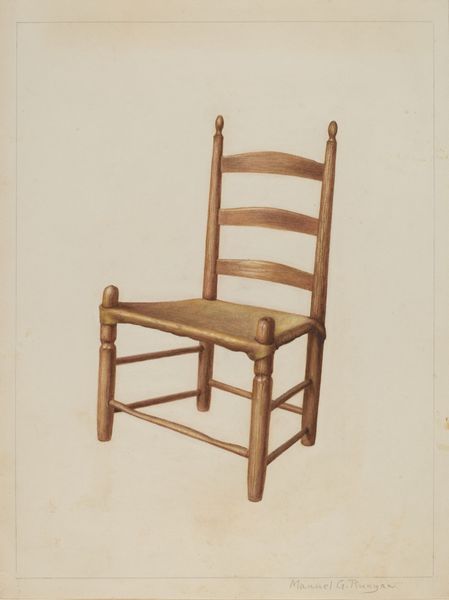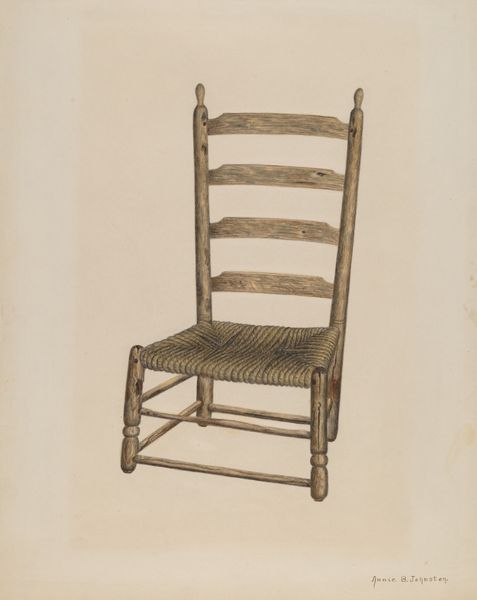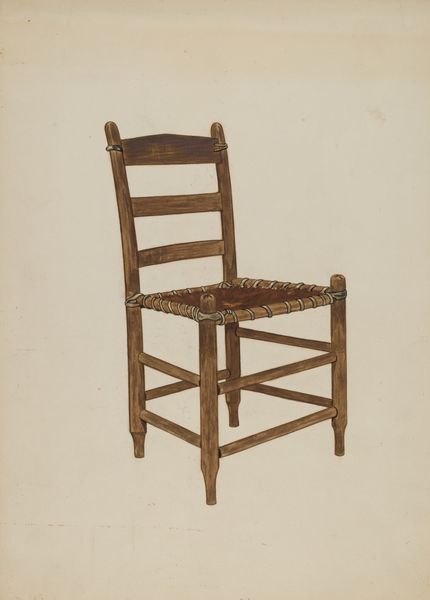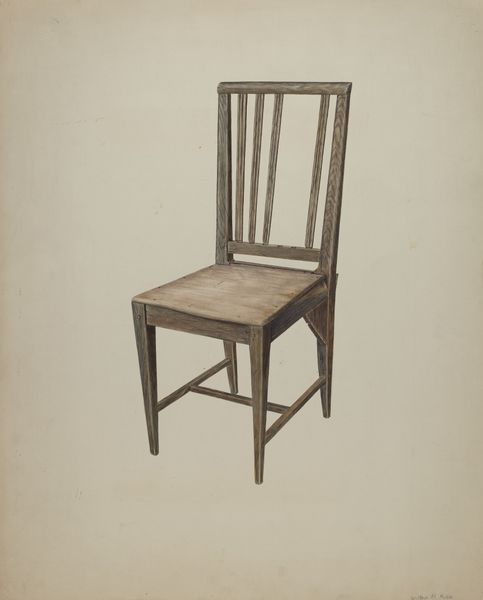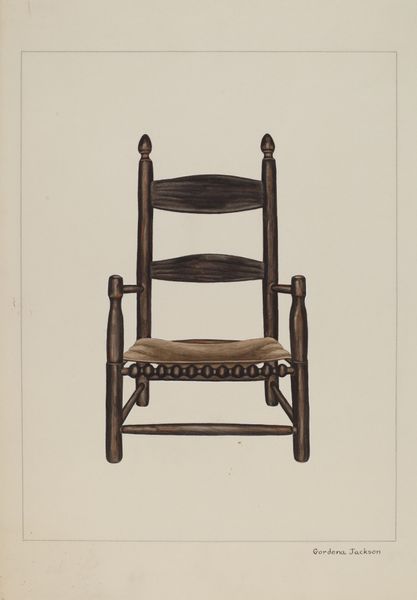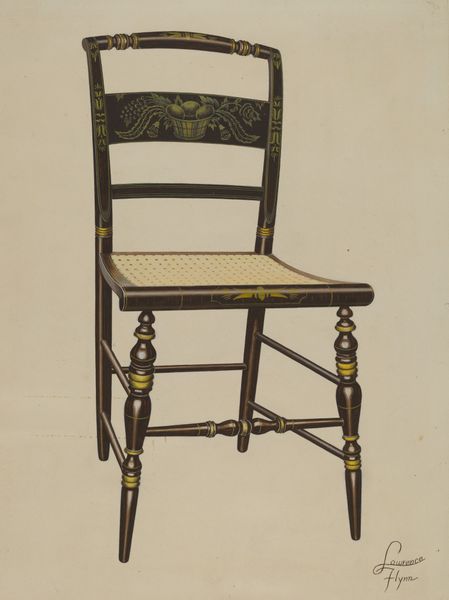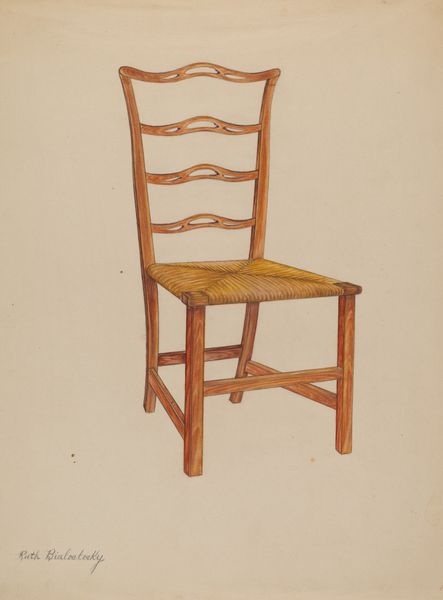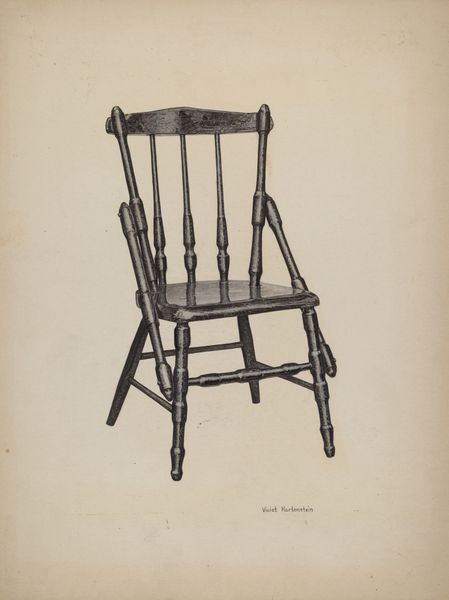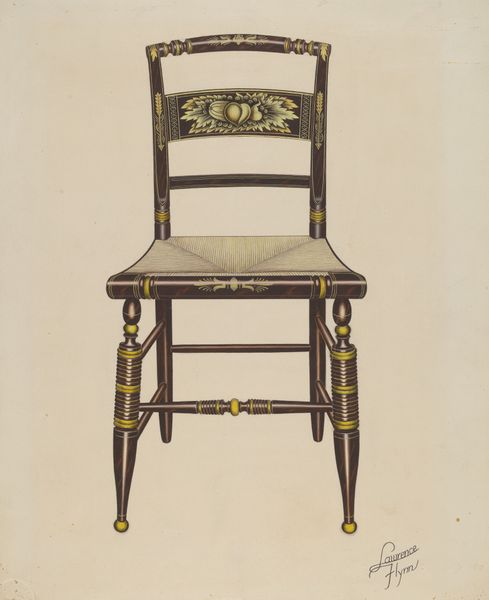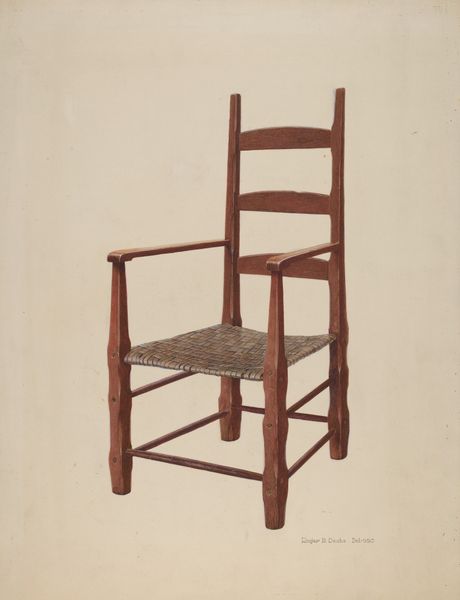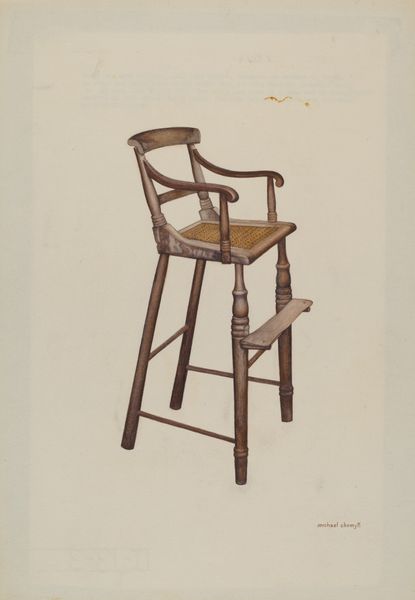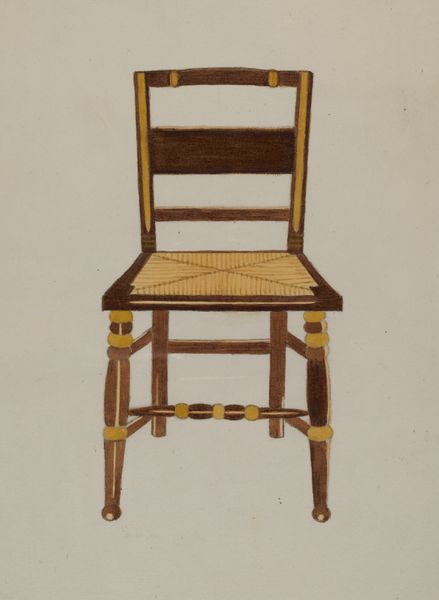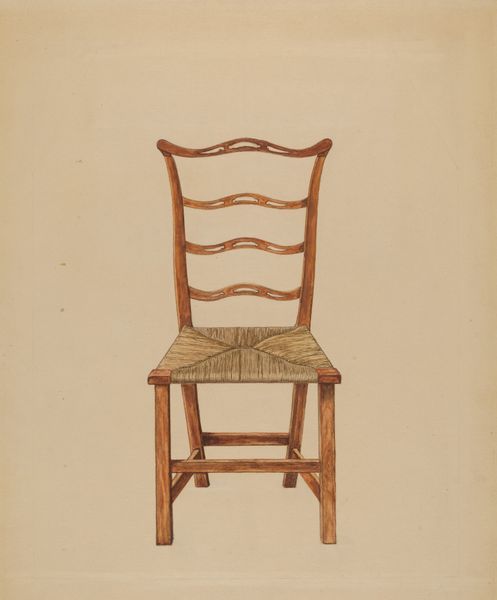
drawing, watercolor
#
drawing
#
water colours
#
charcoal drawing
#
oil painting
#
watercolor
#
watercolour illustration
#
genre-painting
#
watercolor
Dimensions: overall: 29 x 24.4 cm (11 7/16 x 9 5/8 in.) Original IAD Object: 35 1/2"high; 17 3/4"wide, front; 13 1/2"deep-seat; Seat 15"high.
Copyright: National Gallery of Art: CC0 1.0
Editor: We're looking at John Cutting's "Ladder Back Chair," created around 1939, a watercolor drawing. It strikes me as a study in contrasts – the rigid geometry of the chair itself versus the soft, almost ethereal quality of the watercolor. What do you see in this piece, from a formalist perspective? Curator: Indeed. Note the artist's meticulous attention to line. Cutting masterfully uses line to delineate the structure of the chair, giving form and definition. The rhythmic repetition of the horizontal lines in the ladder back creates a visual cadence that draws the eye upward. Consider how the artist handles light. Notice how light and shadow are evoked, providing depth, and articulating its texture. What impact does that have? Editor: It does add to its realistic depiction. And the texture! The woven seat seems so tactile. The use of the medium really makes the roughness palpable. Curator: Precisely. The strategic use of color further enhances the overall composition. The subdued palette— primarily blues and browns—unifies the image and evokes a sense of quiet simplicity. Note also the background. It is devoid of details, is not it? Editor: Yes, the plain background really forces you to focus on the chair itself, highlighting its form and texture even more. By foregoing context, do you think it invites the viewer to concentrate solely on the object's aesthetic qualities? Curator: It seems to suggest that. In absence of distracting extraneous detail, the artist prompts you to dissect the construction of the subject, reducing a chair into form, shape, tone and line. This exercise transcends the practical object to achieve an almost Platonic ideal of "chair-ness." It's the anatomy of functionality, depicted with elegant precision. Editor: I see what you mean! It's easy to get caught up in trying to interpret meaning in art, but sometimes it really is just about the visual experience itself. Thank you for broadening my understanding. Curator: You are most welcome. The aesthetic experience is as essential. Considering a piece as its core elements allows the meaning to unfold more organically.
Comments
No comments
Be the first to comment and join the conversation on the ultimate creative platform.

